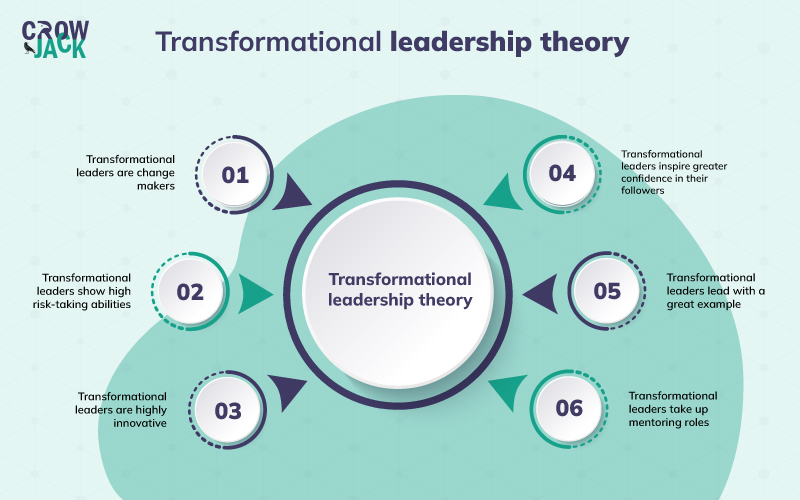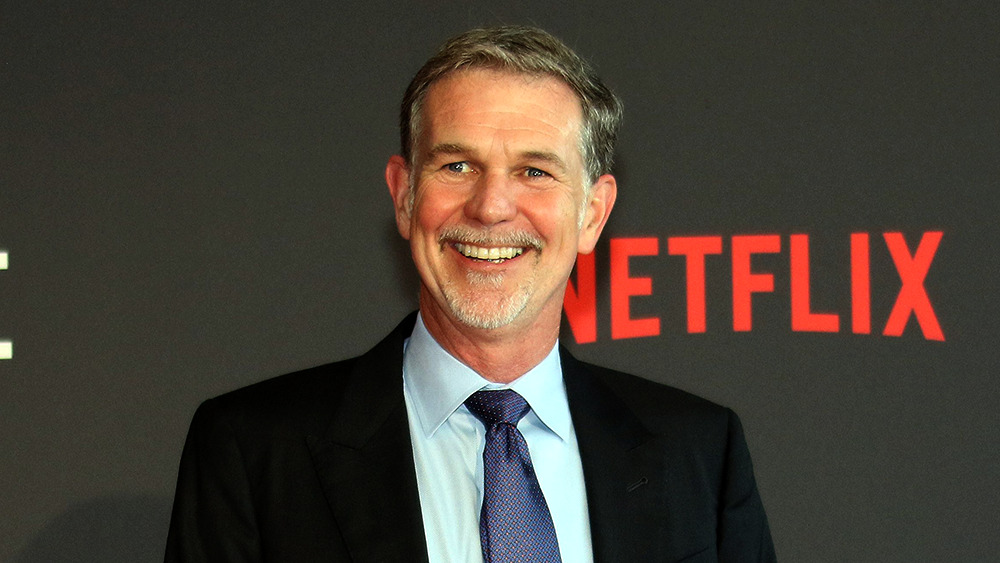Overview
Transformational leadership is often viewed as one of the most successful approaches to leadership. The concept of transformational leadership was first devised in 1973 by James Downton and was further developed by James Burns and Bernard M. Bass in the subsequent years.
In the contemporary world, transformations at the organizational level have become the need of the hour. Ultimately, those who have the ability to drive outstanding transformations will redefine the very notion of success. Why we are emphasizing this is because transformational leadership is closely linked to the ideation of transformations within organizations.
To elaborate, the Transformational Theory of Leadership endorses a leadership wherein leaders go beyond their self-interests to bring major transformations to the floor for their organization to unlock new horizons of success. To make transformations possible, transformational leaders undertake effective change management and motivate their subordinates to participate in the change with great effectiveness. Transformational leaders have unique visions based on which they envisage organizational changes and do whatever it takes to make the transition successful. This style of leadership has its own unique place among various leadership theories relevant in contemporary times.
To delve deeper into this leadership style, let us shed light on some of the core fundamentals of transformational leadership.
Table of Contents
Key features of Transformational Leadership Theory

Transformational leaders are change-makers, have great risk-taking abilities, question the status quo of things, and effectively envisage the need for change and the impact on the other side of the transformation. They embrace the challenges of experimenting with difference change management models to determine the best strategies for transformations.
Transformational leaders as per the theory guide their subordinates through the change by clearly defining the need for the change, the vision, and values associated with the change, and the benefits of the change. They clearly define the mission and objectives that are linked to the change. They also empower their employees to acquire the skills and knowledge needed to facilitate the change and sustain it. Also, they encourage their subordinates to take initiative and decide for themselves.
The transformational leadership style is aimed at encouraging high innovation and creativity among the employees so that employees develop as change leaders in the future. Transformational leaders are innovators and they aim to cultivate similar attitudes among their team members. In fact, transformational leaders are more than happy to look beyond the traditional ways of doing things to boost efficiency with outside-the-box strategies
The Transformational Theory of Leadership also proposes that leaders need to lead from the front when it comes to talking and implementing changes within the organization. The theory focuses on the need for leaders to have an idealized influence on their followers by practicing what they preach to set fine standards.
The theory further states leaders should act as mentors and coaches for their employees and should appreciate even the smallest acts of creative intellect coming from the employees. Besides, leaders extend great support to employees who have similar characteristics and are inclined to the idea of transformations.
Relevance of the theory in the contemporary corporate world
In any organization, the need for transformational leadership may exist at different levels. To explain, transformations may be needed within the organizational structure, teams, operational processes, marketing strategies, product portfolio, and so on. Otherwise too, if we look at the external business environment in contemporary times, the enormous competition is pushing businesses to evolve constantly and incorporate positive changes.
This is where transformational leaders will prove to be the greatest assets for businesses. Transformational leaders have the ability to facilitate changes and keep all employees motivated and aligned to the process of change. With their great vision, transformational leaders can contribute with incredible business planning strategies linked to product development, business diversification, exploring new markets, and so on. With respect to business expansion, higher profitability, and diversification of revenue streams, transformational leadership has the potential to offer unparalleled competitive advantages.
Also, whenever employees will show resentment toward change or will begin to lose productivity amid new processes, transformational leaders are best suited to manage them. As per the transformational theory, leaders will help employees accept the change as well as participate in the change. When employees face productivity issues, leaders will contribute to their learning and adaptation by providing learning and training opportunities. They can lend perspective to their employees with their knack for innovation and creativity and reward innovation to keep the morale high.
Subsequently, they can have everyone on the same page when it comes to institutionalizing the change within the organization.
Also, by identifying the characteristics of transformational leadership, organizations can identify prospective leaders who have the capability to drive positive changes in the organization. In a fast-changing business environment, organizations can recognize exceptional and reliable leaders to be the face of change in the organization.
A real-world example of a transformational leader
Reed Hastings leadership style analysis

Binge-watching is in vogue today and most millennials and Gen Z folks will tell you that ‘Netflix and Chill’ is one of their favorite interests to pursue. But was Netflix always a streaming platform or has it transformed its way to becoming the global hub of entertainment and binge-watching?
In case you don’t know, Netflix began its journey in 1997 as a small business that would rent DVDs to people via mail. It was founded by Reed Hastings and Marc Randolph in California and little did they know that Netflix will amass such exemplary success. However, as a truly transformational leader Reed Hastings always continued to believe that Netflix can be a big thing one day and today, owing to his transformational leadership, Netflix is the most beloved video streaming service in the world with a market capitalization of USD 174.8 billion.
Reed Hastings has never been shy of taking risks, proposing major changes in the company, and effectively leading these changes while keeping his teams motivated. What started as a DVD renting service in 1997 transformed in 2007 to become a streaming service after it became a profitable company in 2006. The first trial was started in Canada and in 2010, Netflix introduced its streaming services in the US as it embraced more positive changes under the transformational leadership of Reed Hastings. Through all these massive transitions, Reed Hastings ensured that he explained the need for change to his teams, defined the vision and value behind the change, and helped his employees to adapt to the change.
Further, in 2012, Netflix changed its strategy and started creating original content. In the subsequent year, the company transformed and innovated again to introduce Netflix subscriptions that would add to the revenues in a mammoth way. By the end of 2021, owing to the transformational leadership of Reed Hastings who is still the CEO of Netflix, the company had built a strong presence in more than 190 countries having amassed 209 million global subscribers.
In fact, the saga of transformations at Netflix still continues and the company is now looking forward to launching cloud gaming services. For that, Netflix has acquired Next Games, a Finland-based gaming company to pursue its ambitions of becoming the next gaming giant. The story of Netflix is quite intriguing and full of milestones that were set for some massive transformations. This is why Reed Hastings is one of the most exceptional examples of transformational leadership. With his strong vision, a knack for innovation, great mentorship, and progressive approach as a leader, he has led Netflix to become one of the most highly valued companies in the world. He was never reluctant to take risks, offer creative liberty to his employees and change the status quo to aim higher.
FAQs
Are there any potential challenges with the Transformational Theory of Leadership?
While the Transformational Theory of Leadership is generally effective, some leaders might rely too heavily on charisma and vision, neglecting the importance of day-to-day management. Additionally, if followers' expectations are not met, their motivation may wane over time.
Can Transformational Leadership be combined with other leadership styles?
Yes, leaders often combine Transformational Leadership with other leadership styles to address various situations effectively. The combination of transformational and transactional leadership, known as the "transformational-transactional leadership continuum," allows leaders to balance inspiring followers with managing performance.
Previous Theory
Path-Goal Theory of LeadershipNext Theory
Behavioral Theory of Leadership
 Proof Reading
Proof Reading  Copy Writing
Copy Writing  Resume Writing
Resume Writing  Blogs
Blogs Guides
Guides SOP's
SOP's Student Resources
Student Resources Research Topics
Research Topics Login
Login Register
Register